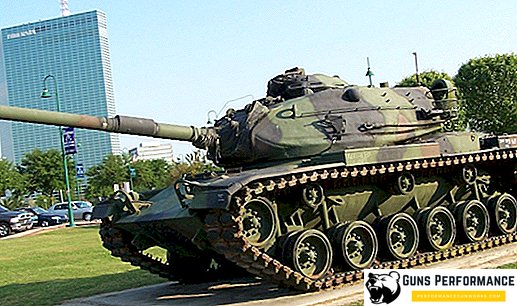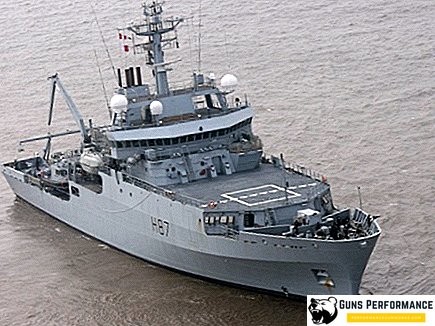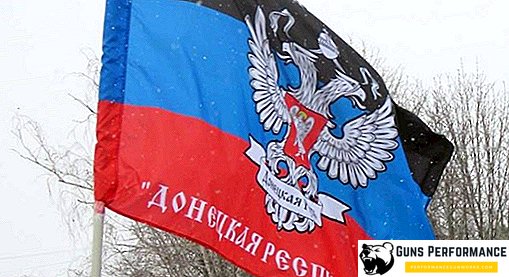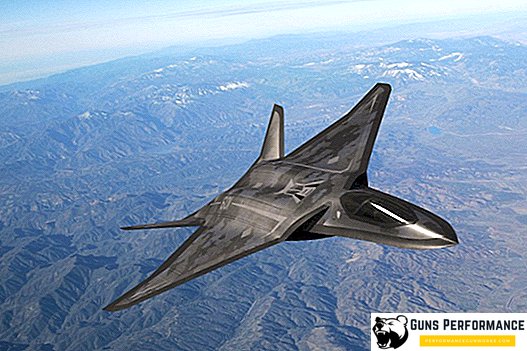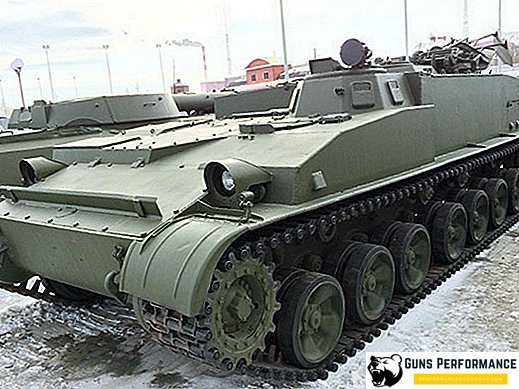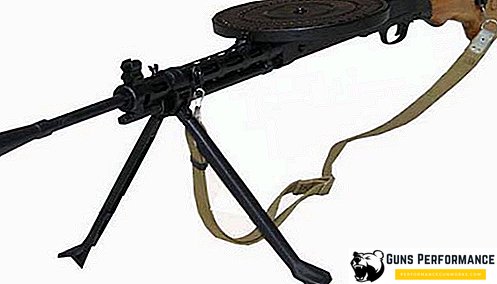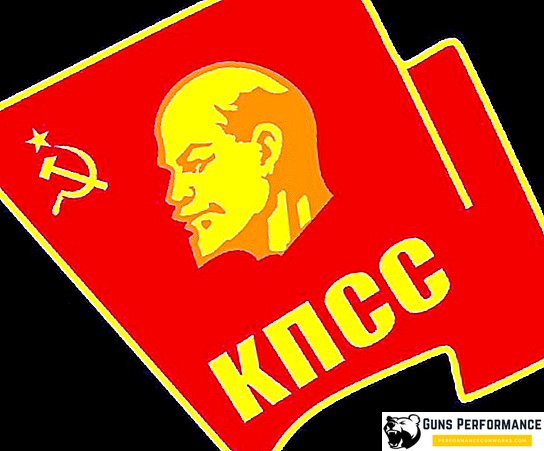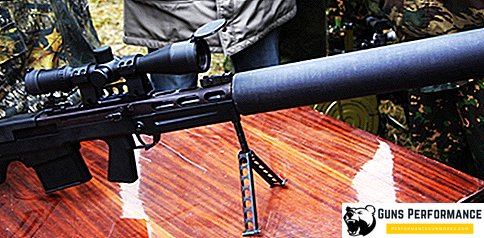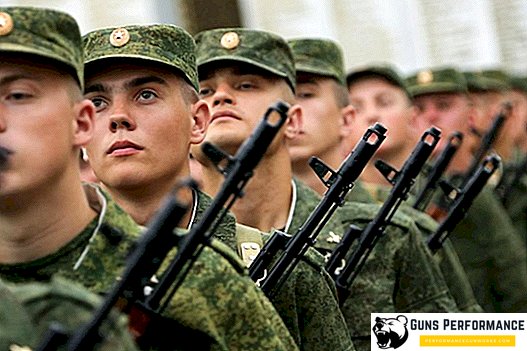In Soviet historiography, the attack of Hitler Germany on the USSR is often represented as a real tank invasion. The invulnerable armored hordes pierced the defensive orders of the Red Army like a butter knife, and the Soviet tanks "burned like a match" and, in general, were not suitable. Is that except for the T-34. But there were so few of them.
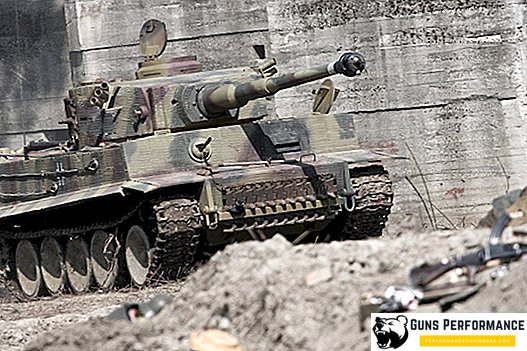
In fact, the situation was somewhat different. The Germans did not have too many armored vehicles, but the main thing was different: in general, it was seriously inferior to the latest developments of the Soviet arms industry.
Most of the German tank fleet was represented by light vehicles, which had bulletproof armor and weak weapons. The Germans had nothing to do with the Soviet medium tank T-34 or heavy KV. An open battle with these machines did not promise Wehrmacht tankmen anything good, moreover, the German anti-tank artillery was powerless against the armor of the Soviet giants.
The heaviest German tank T-IV, with which Germany started the war with the USSR, was significantly inferior to the Soviet vehicles both in terms of security and armament. Taking into account the experience of the first months of hostilities on the Eastern Front, it was modernized, but this was not enough. The Germans needed their own heavy tank, which could stand on equal terms with the Soviet KV and the T-34s.

The history of the creation of the "Tiger"
Work on the German heavy tank began long before the outbreak of World War II. Back in 1937, the German company Henschel was tasked to create a heavy breakthrough tank weighing more than 30 tons.
After the start of the Second World War, the idea of creating a heavy tank for Germany became even more relevant. After the start of the conflict, the designers of the Henschel and Porsche companies were instructed to develop a new heavy tank weighing more than 45 tons. Prototypes of new cars showed Hitler April 20, 1942, on his birthday.

The machine, represented by the company "Henschel", was more "conservative", simple and cheap than the tank of their competitors. The only serious innovation that was used in its design was the "chess" arrangement of the rollers, used previously on armored personnel carriers. This developers sought to improve the smoothness and accuracy.
The sample from the Porsche was more complicated, had longitudinal torsion bars and an electrical transmission. It cost more, required a lot of scarce materials for production, therefore less suitable for wartime conditions. In addition, the Porsche had a low passability and a very small power reserve.
It is noteworthy that Porsche himself was so confident of victory that even before the contest he ordered the serial production of the undercarriage of the new tank. But he lost the competition.

The Henschel machine was put into service - but with some substantial remarks. Initially, this tank was planned to install a 75-mm gun, at that time no longer satisfying the military. Therefore, the tower for the new tank was taken from its competing prototype Porsche.
It was this unique hybrid that became one of the most legendary tanks of the Second World War - Panzerkampfwagen VI Tiger Ausf E (Pz.VI Ausf E).
During the war, 1354 Panzerkampfwagen VI Ausf E units were produced. In addition, several modifications of this tank appeared, including the Panzerkampfwagen VI Ausf. B Tiger II or "Royal Tiger", as well as "Jagdtigr" and "Sturmtigr".
In his first fight, "Tiger" entered the end of the summer of 1942 near Leningrad, and the debut was very unfortunate for the car. The Nazis began to use these tanks en masse in early 1943, the Kursk Bulge became their apotheosis.
So far, the controversy over this car has not abated. It is believed that the Panzerkampfwagen VI "Tiger" - the best tank of the Second World War, but there are opponents of this point of view. Some experts believe that the mass production of "Tigers" was a mistake that cost Germany dearly.
To understand this question, you should get acquainted with the device and the technical characteristics of this outstanding tank, to understand what were its strengths and weaknesses.

The device of the tank "Tiger"
"Tiger" has a classic layout of the body with the engine, located in the rear of the case, and the transmission, located in front. In the front of the car there was a department of management, in which there were places for the driver and the gunner-radio operator.

In addition, in the front compartment placed the controls, a radio station and a course gun.
The middle part of the vehicle was occupied by the fighting compartment, in which the remaining three crew members were placed: loader, commander and gunner. Here was placed the main part of the ammunition, observation devices and hydraulic rotation of the turret. A gun and a machine gun paired with it were installed in the turret.

The aft part of the "Tigra" occupied the power compartment, which was located in the engine and fuel tanks. Between the power and the fighting compartment was installed armored partition.
The hull and turret of the tank are welded, from armor rolled sheets with surface cementing.
Horseshoe-shaped tower, the vertical part of which is made of solid sheet metal. In front of the tower was a cast mask, in which a weapon, a machine gun and sights were installed. The rotation of the tower was carried out using a hydraulic drive.
On the Pz.VI Ausf E was installed 12-cylinder carburetor engine Maybach HL 230P45 with water cooling. The engine compartment was equipped with an automatic fire extinguishing system.
"Tiger" had eight gears - four forward and four back. Few cars of that time could boast such luxury.

Suspension tank individual, torsion. Skating rinks are arranged in a staggered manner, without supporting rollers. Front wheel drive. The first cars had rollers with a rubber bandage, then they were replaced by steel.
It is curious that two types of caterpillars of different widths were used on the Tigers. The narrower ones (520 mm) were used to transport the tank, while the wide tracks (725 mm) were intended for movement over rough terrain and for combat. This measure had to be taken due to the fact that a tank with wide tracks simply did not fit on a standard railway platform. Naturally, this design solution did not add joy to the German tank crews.
The Pz.VI Ausf E was armed with a 88 mm 8.8 cm KwK 36 cannon, a modification of the famous Flak 18/36 anti-aircraft gun. The barrel ended with a characteristic two-chamber muzzle brake. Small changes were made to the tank cannon, but the characteristics of the anti-aircraft gun were not generally changed.
Ranzerkampfwagen VI Ausf E had excellent observation tools made at the Zeiss factory. There is evidence that better-quality optics of German cars allowed them to start the fight earlier in the morning (even in the pre-dawn darkness) and to end the fighting later (at dusk).
All Pz.VI Ausf E tanks were equipped with a FuG-5 radio.

The use of the tank "Tiger"
Tank Pz.VI Ausf E "Tiger" was used by the Germans in all theaters of the Second World War. After adopting the "Tiger" into service, the Germans created a new tactical unit - a heavy tank battalion. At first it consisted of two, and then three tank companies of heavy tanks Pz.VI Ausf E.
The first battle of the Tigers took place near Leningrad, near the station Mga. He was not too successful for the Germans. The new equipment was constantly breaking down, one of the tanks got stuck in a swamp and was captured by Soviet troops. On the other hand, Soviet artillery was practically powerless against the new German machine. The same can be said about the shells of Soviet tanks.
Tiger tanks were used during the Battle of Kursk, where their total number was 144 units, or approximately 7.6% of the total number of German tanks that participated in Operation Citadel. It is clear that Pz.VI Ausf E could not fundamentally influence the situation.
Had time to war "Tigers" and on the African theater of operations, and on the Western Front after the landing of the Allies in Normandy.
In the battles of World War II, the Pz.VI Ausf E tank showed high efficiency and earned excellent reviews from both the Wehrmacht high command and ordinary tank crews. It was on the "Tigre" that the most productive German tanker, Obersturmführer SS, fought against Michael Wittmann, who had 117 enemy tanks.

A modification of this machine, the Royal Tiger or Tiger II, has been produced since March 1944. Total was made a little less than 500 "Royal Tigers".
They installed an even more powerful 88-mm cannon on it, which could cope with any tank of the anti-Hitler coalition. Even more armor was strengthened, which made the “Royal Tiger” almost invulnerable to any anti-tank weapon of that time. But his chassis and engine became his Achilles' heel, which made the car slow and sluggish.

The Royal Tiger was the last German production tank of the Second World War. Naturally, in 1944 this machine, even if it possessed supernatural characteristics, could no longer save Germany from defeat.
A small number of "Tigers" the Germans put the armed forces of Hungary, which was their most efficient ally, this happened in 1944. Three more cars were sent to Italy, but after its surrender, the Tigers came back.
Advantages and disadvantages of the "Tiger"
Was "Tiger" a masterpiece of engineering genius in Germany - or was it a waste of resources of a warring country? Disputes in this regard are still ongoing.
If we talk about the undeniable advantages of Pz.VI, then it is necessary to note the following:
- high level of security;
- unsurpassed firepower;
- crew workability;
- excellent means of observation and communication.
The disadvantages that have been repeatedly emphasized by many authors include the following:
- poor mobility;
- production complexity and high cost;
- low maintainability of the tank.

Virtues
Security If we talk about the merits of the "Tiger", then the main one should be called a high level of protection. At the beginning of his career, this tank was almost invulnerable, and the crew could feel completely safe. The Soviet 45-mm, British 40-mm and American 37-mm anti-tank artillery systems could not harm the tank at minimum distances, even if they hit the board. Things were no better with tank guns: the T-34 could not penetrate Pz.VI armor even from a distance of 300 meters.
Soviet and American troops used anti-aircraft guns as well as large-caliber guns (122 and higher) against the Pz.VI. However, all these gun systems were very inactive, costly and very vulnerable to tanks. In addition, they were under the command of high army commanders, so it was very problematic to quickly transfer them to stop the Tigers' breakthrough.
Excellent security gave the crew of the "Tiger" high chances to survive after the defeat of the tank. This contributed to the preservation of experienced personnel.
Firepower. Prior to the appearance on the battlefield of the IS-1, the "Tiger" had no problems with destroying any armored targets on both the Eastern and Western fronts. The 88-mm cannon, which was armed with the Pz.VI, penetrated any tank, except the Soviet IS-1 and IS-2, which appeared at the end of the war.
Convenience for the crew. Almost everyone who describes the "Tiger", talking about his excellent ergonomics. The crew was comfortable to fight in it. Often, excellent observation means and sights, distinguished by well-thought-out construction, and high-quality execution, are also noted.
disadvantages
The first thing worth mentioning is the low mobility of the tank. Any combat vehicle is a combination of many factors. The creators of the "Tiger" maximize firepower and security, sacrificing the mobility of the machine. The mass of the tank is more than 55 tons, and this is a decent weight even for modern cars. Engine with a capacity of 650 or 700 liters. with. - this is too little for such a mass.
There are other nuances: the layout of the tank, with the location of the engine behind, and the transmission in front increased the height of the tank, and also made the gearbox not very reliable. The tank had a fairly high ground pressure, so its operation in off-road conditions was problematic.
Another problem was the excessive width of the tank, which led to the emergence of two types of caterpillars, which added to the headache of the staff.
A lot of difficulties were caused by a chess suspension, which turned out to be very difficult to maintain and repair.
A significant problem was also the complexity of the production and the high cost of the tank. Was it necessary for Germany, which was experiencing an acute shortage of resources, to invest in the mass production of a machine worth 800,000 Reichsmarks. This is two times more than the most expensive tank of that time. Perhaps it was more logical to concentrate efforts on the production of relatively cheap and proven T-IV, as well as self-propelled guns?
Summarizing the above, we can say that the Germans created a really good tank, which practically had no equal in the one-on-one duel. It is rather difficult to compare it with allied vehicles, because there are practically no analogues to it. The Tiger was a tank designed to reinforce linear units, and it performed its functions very effectively.
Soviet IS-1 and IS-2 are breakthrough tanks, and the M26 "Pershing" is rather a typical "single tank". Only the IS-2 at the final stage of the war could be an equal rival to Pz.VI, but at the same time seriously lost to him in the rate of fire.
You can also say that creating the Pz.VI "Tiger", the Germans abandoned the concept of Blitzkrieg, which almost brought them victory in 1941. "Tigers" very poorly suited for such a strategy.

Technical characteristics of the tank "Tiger"
| Combat weight, kg: | 56000 |
| Length, m: | 8,45 |
| Width, m: | 3.4-3.7 |
| Height, m: | 2,93 |
| Crew, man: | 5 |
| Engine: | Maubach HL 210P30 |
| Power, hp: | 600 |
| Maximum speed, km / h | |
| on the highway | 38 |
| by dirt road | Oct.20 |
| Cruising on the highway, km: | 140 |
| Fuel stock, l: | 534 |
| Fuel consumption per 100 km, l: | |
| on the highway | 270 |
| by dirt road | 480 |
| Armament: | |
| a gun | 88mm KwK 36 L / 56 |
| machine guns | 2 x 7.92 mm MG34 |
| smoke grenade launchers | 6 x NbK 39 90 mm |
| Ammunition, pcs .: | |
| shells | 92 |
| cartridges | 4500 |
| Armor protection (thickness / angle), mm / deg: | |
| Housing | |
| forehead (top) | 100/10 |
| forehead (bottom) | 100/24 |
| board | 80/0 |
| stern | 80/8 |
| roof | 25 |
| bottom | 25 |
| Tower | |
| forehead | 100/8 |
| board | 80/0 |
| roof | 25 |
| gun mask | 100-110/0 |


